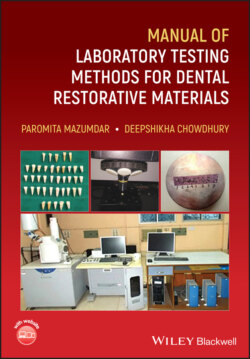Читать книгу Manual of Laboratory Testing Methods for Dental Restorative Materials - Paromita Mazumdar - Страница 16
1.4 Flexural Strength
ОглавлениеThe flexural strength of a material is its ability to bend before it breaks. It is obtained when the ultimate flexibility of one material is achieved before its proportional limit. This is a measure of the strength of a beam of restorative material supported at each end and subjected to a static load. Stresses on the upper surface of the beam tend to be compressive, whilst those on the lower surface are tensile. This test may be considered to combine elements of tensile and compressive testing. Flexural forces are the result of forces generated in clinical situations and the dental materials need to withstand repeated flexing, bending, and twisting. A high flexural strength is desired once these materials are under the action of chewing stress that might induce permanent deformation. To evaluate flexural strength of a dental material, bar‐shaped specimens with dimension of 25 mm in length,2 mm in width and 2 mm in height (ISO 9917 – 212) are generally used. Specimens are placed on two supports and a load is applied at the center. This test is known as three‐point bending test. The load at yield is the sample material's flexural strength that is calculated by the following formula:
(1.1)
Figure 1.8 Schematic representation of the set‐up for compressive strength.
Figure 1.9 Schematic representation of flexural strength assessment.
Source: Anusavice [12], Anusavice [13], International Organization for standardization [14].
where P is the ultimate load at fracture, l is the distance of the supports, b is the width of the specimen, and d is the thickness of the specimen [12–14] (as shown in Figure 1.9).
